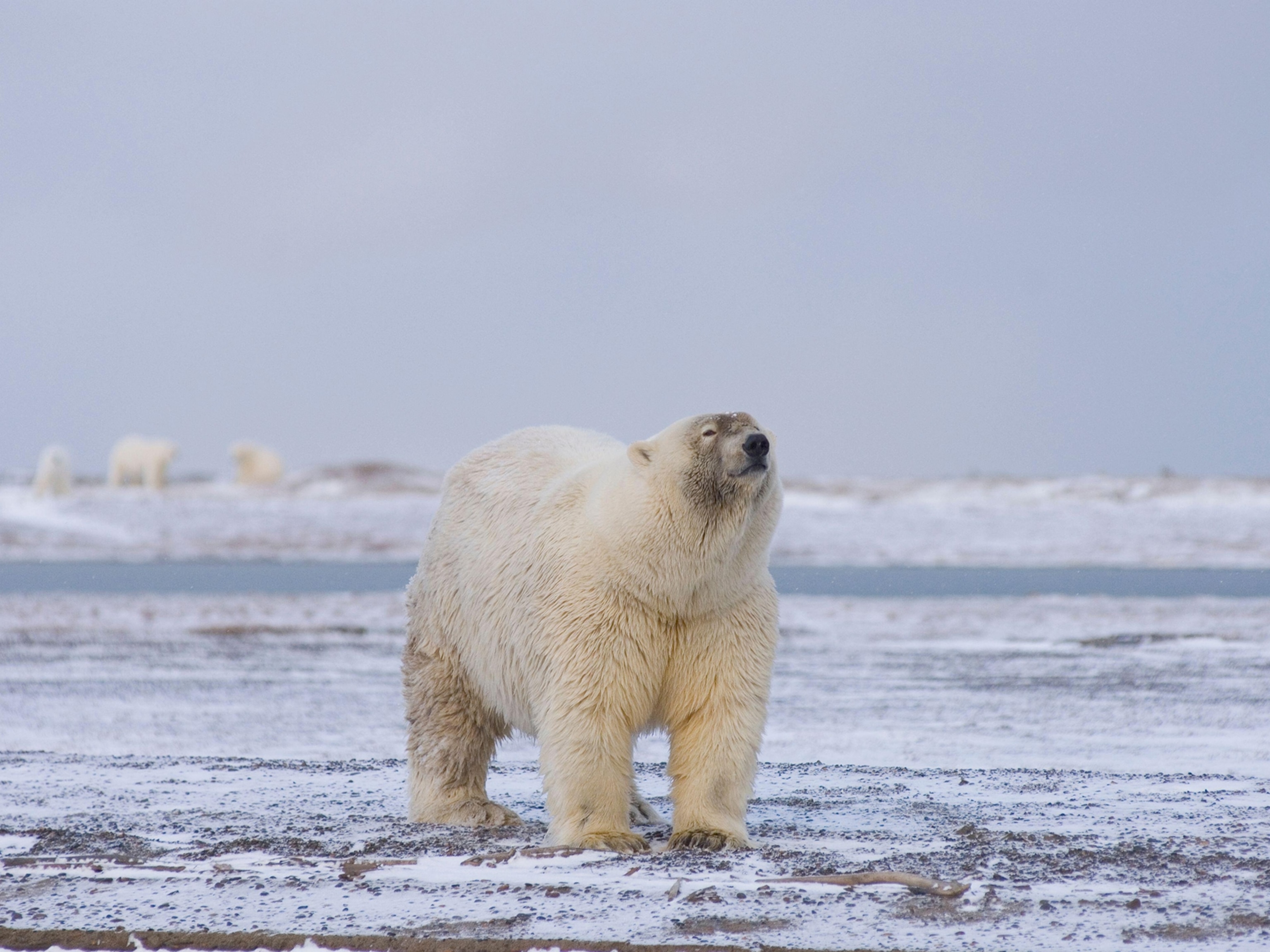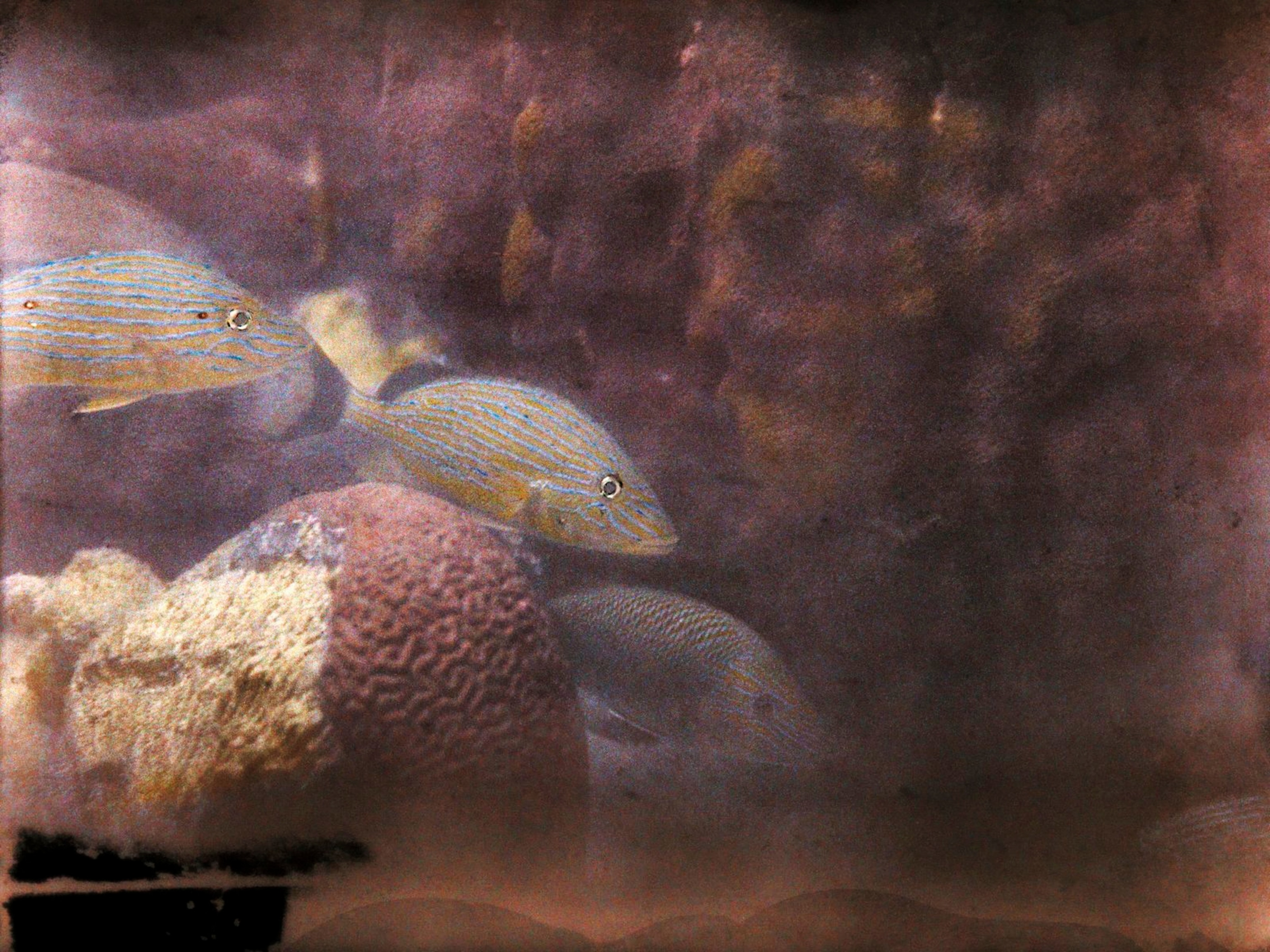
Arctic ice is getting thinner by the day—and sea life is suffering
A new study says the structural change has been abrupt, making life harder for everything from tiny algae to polar bears.
In April 1895, when famed Norwegian explorer Fridjtof Nansen attempted to mush across the frozen Arctic Ocean to reach the North Pole, he was stopped by endless rows of sea ice ridges. “It was a veritable chaos of ice blocks, stretching as far as the horizon,” wrote Nansen in his expedition account, Farthest North. Dragging a sled over them was “enough to tire out giants.”
The gnarled ice-scape that thwarted Nansen is now largely a thing of the past, according to research reported in Nature on Wednesday. Arctic sea ice has undergone an abrupt, permanent, and consequential change in its structure—from thick and ridged to thin and flat. The shift occurred around 2007, when record-low summer ice cover triggered a feedback cycle of rising ocean heat and spiraling ice.
Now, when ice floes collide, the thinner sea ice is more prone to shatter from the pressure than build ridges—an accordion-like process by which ice thickens. The thin, flat ice also moves across the ocean more quickly, giving floes less time to grow, and making life harder for those who rely on them to survive.
“Sea ice is to the Arctic ecosystem what soil is for the forest,” says Flavio Lehner, a climate scientist at Cornell University and Polar Bears International. “Rapid changes like these will affect all sea ice-dependent fauna and flora, from tiny under-ice algae to top predators like polar bears.”

Ridges make Arctic sea ice thicker and sturdier. From above, they look “like Lego bricks in an elongated pile,” says Mats Granskog, part of the research team that has since 1990 been monitoring sea ice in the Fram Strait—the main gateway between the Arctic and Atlantic oceans. Thick, ridged ice like this has decreased by half since 2007, lead author Hiroshi Sumata and colleagues at the Norwegian Polar Institute report.

Today’s Arctic sea ice is more likely to resemble a snow-covered parking lot than the chaotic ice blocks Nansen saw. Two years of tanking summer sea ice—in 2005 and 2007—exposed the dark ocean surface to more heat from the sun, further reducing sea ice and increasing heat in an ongoing cycle, says co-author Laura de Steur. The new study's findings are consistent with satellite observations and other research, says Julienne Stroeve, a sea ice remote sensing expert with the U.S. National Snow and Ice Data Center and the University of Manitoba.

Ridges form when floes bump against each other (called ridging), or one over another (called rafting). The pressure makes sections “deform” — thrusting blocks of ice up into chunky piles. This process is the fastest way for ice to thicken, Sumata says. However, thinner ice can’t produce such sizeable ridges, and is more fragile, likely to disintegrate when floes crash.
As with icebergs, 90 percent of an ice floe is below water. Ridges on the underside can stretch 60 feet deep, where they act as keels to help hold the ice in place and give it more time to grow. But the Transpolar Drift Stream—the powerful current Nansen discovered by deliberately freezing his ship into the ice—has sped up by more than a third since 2007, the researchers report. With smaller or absent keels, today's ice has less power to resist the forces pushing it across the Arctic and out into the warmer Atlantic, to melt. Consequently, the average lifespan for an ice floe has shortened by more than 1.5 years.

Thinner, flatter, faster—the new ice regime could have profound impacts on the Arctic ecosystem. Polar bears, for instance, have to walk more quickly to stay close to good hunting areas as the drift speed increases. That makes them burn more energy on the “ice treadmill,” says John Whiteman, a biologist at Old Dominion University and Polar Bears International. But with the sea ice platform they hunt on shrinking, and the ice season shortening, the bears’ energy reserves are already stretched thin. Changing ice conditions also threaten ice-reliant mammals such as hooded seals and narwhals, as well as Indigenous communities across the Arctic that rely on ice-hunting for food.

The underside of sea ice hosts a multitude of life, such as these amphipods. Loss of ice-bottom ridges could reduce habitat for these and other tiny organisms at the base of the ocean food web, with repercussions throughout the marine system. Thinner, flatter ice is also more vulnerable to destruction by Arctic cyclones, which are on the rise as the planet warms. The new ice regime could open the Arctic to ship traffic and invasive species. The full consequences remain to be seen. Meanwhile, Arctic water temperatures continue to climb. “Now we see it winter as well as summer,” says oceanographer de Steur, “making it even harder for the already thinner ice to survive.”




